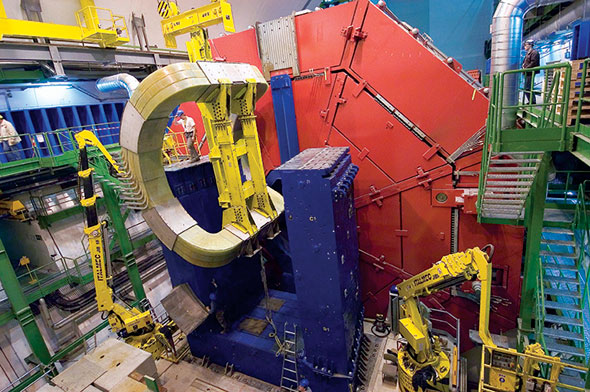ALICE's tight squeeze
Anyone who has ever tried to move a big piece of furniture through a small door knows a few centimeters can mean the difference between success and failure.
 |
| Photo: Maximilien Brice, CERN |
For Detlef Swoboda, the margin of error felt very small indeed: He had to move 30 pieces of a mammoth, multimillion- dollar dipole magnet 60 feet into the air, through a narrow passageway and 60 feet back down, where it would be reassembled and used in the ALICE experiment.
How big were those pieces? They weighed at least 33 tons each.
How much clearance did he have? No more than 2 or 3 centimeters.
The move wasn't easy, but it saved ALICE—one of four major experiments at the Large Hadron Collider in Geneva—both time and money.
The big savings came from installing the ALICE detector in a cavern previously occupied by another experiment, called L3, and reusing L3's monstrous solenoid magnet. The L3 magnet is bright red, four stories tall and rooted right in the middle of the cavern. The experimenters didn't want to risk damage—plus added time and expense—by taking it apart and moving it aside. So to fit everything in, they'd have to move all the components of their enormous new detector magnet, the muon dipole, up over the top of the red monster and down the other side.
Swoboda is the project leader for the new dipole magnet. His team lowered the 30 chunks of the dipole 165 feet down the entrance shaft to the cavern, assembled and tested the entire magnet, took it apart again and used an overhead crane to move the pieces, a few centimeters per minute, over the big L3 solenoid. The dipole's two 36-ton coils made it with 3 centimeters to spare. The whole process took several months.
When asked if he ever thought the task might simply be too difficult, Swoboda gives a laugh. “I'm a designer and a builder of magnets,” he says. “It was just my job.”
Calla Cofield
Click here to download the pdf version of this article.






